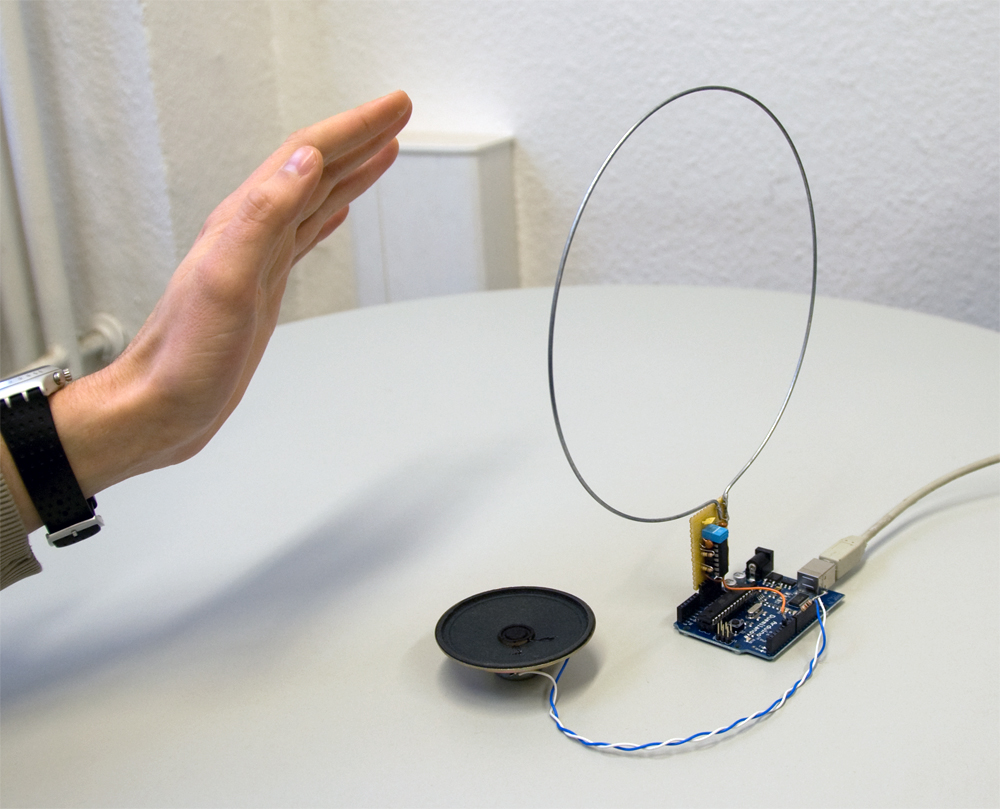Arduino-based theremin
— May 21st, 2012

Theremin is one of the most exiting musical instruments ever made, mainly because of its “quite odd” playing method. Infact, its working principle is based on near-filed coupling between the hands of the theremin player and two metal antennas, used to determine the pitch of a variable-frequency oscillator and to adjust the volume of the output signal, respectively.
Several theremin implementation are possible, such as the “original” analog one (based on the mixing of two sine waves originated by a fixed-frequency oscillator and a variable-frequency one) and those based on digital techniques.
LabIII guys implemented a nice and simple Arduino theremin module, based on a TTL LC-type oscillator, usable not only to play electronic music, but also as a generic sensing-device, for example to control motors and/or to work with Processing, Max etc.
The detailed description of the project, together with schematics and source code, can be found here.
[Via: elektor.it]
May 25th, 2012 at 08:14:14
Hello Arduino,
I know what you mean, Simply what I want to do is make a button linked to an Arduino board that can interact with flash. My aim is to produce a flash file that plays specific motion picture clips when people today press the button. If anybody is aware of how to do this or can stage me in the correctly course, like furnishing me with a weblink to a tutorial, be sure to allow me know.
Cheerio
February 15th, 2015 at 21:17:55
I built a version of the theremin for arduino with two antennas and a heterodyne oscillator, http://www.gaudi.ch/OpenTheremin